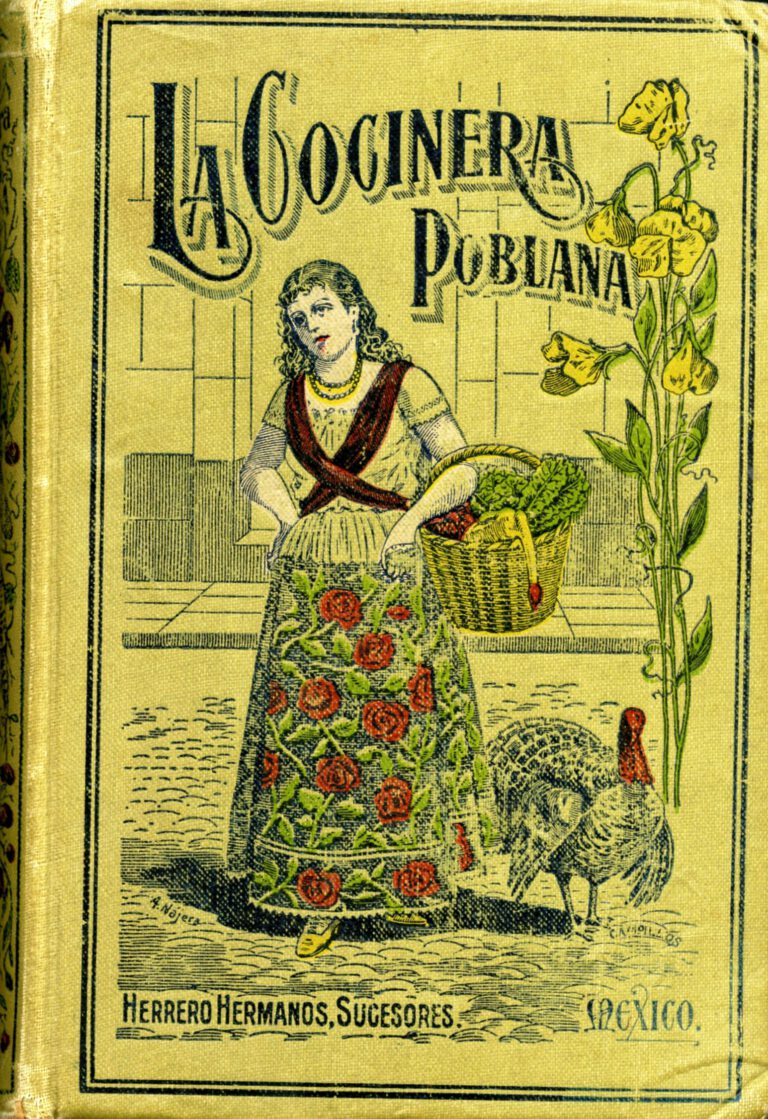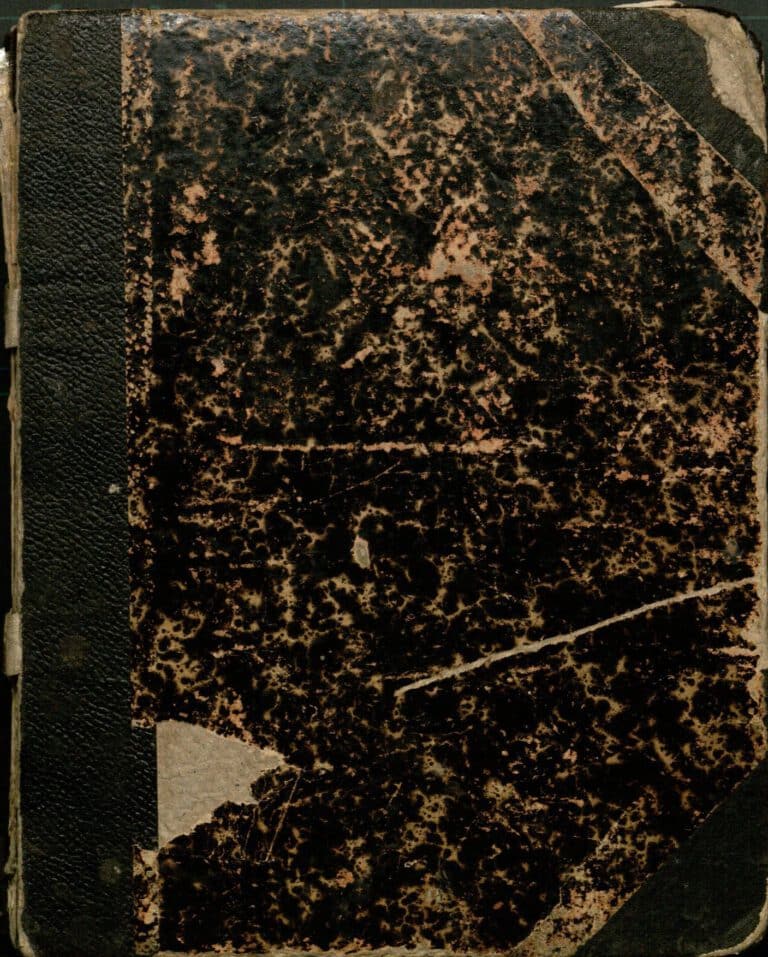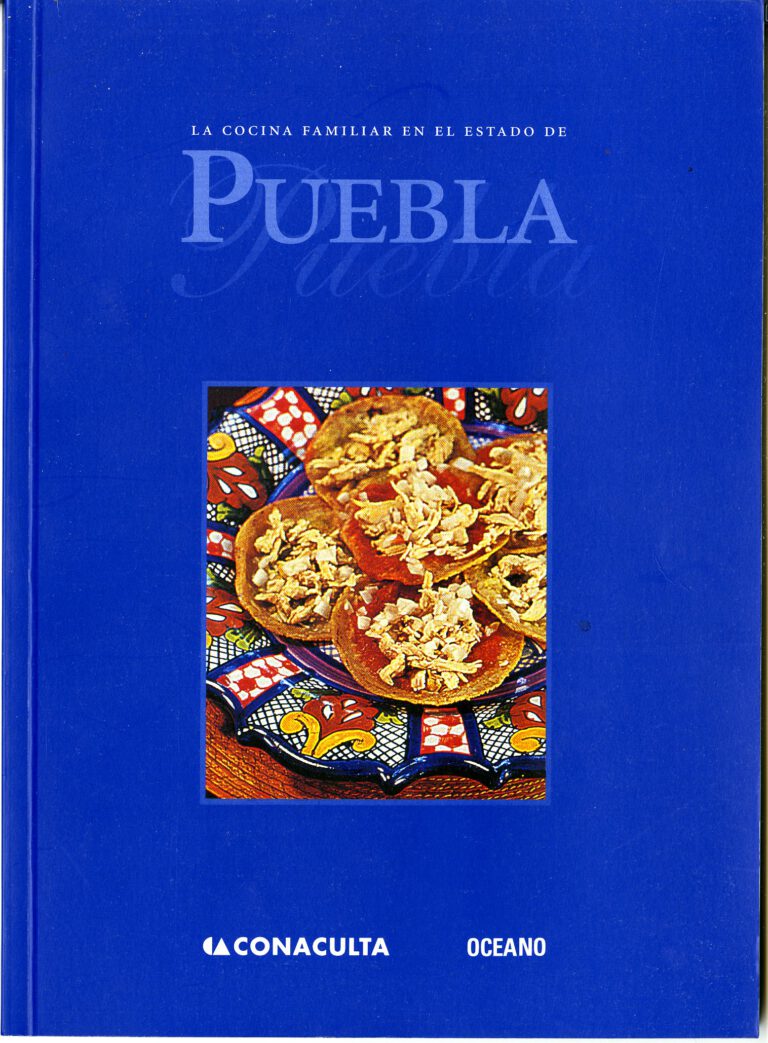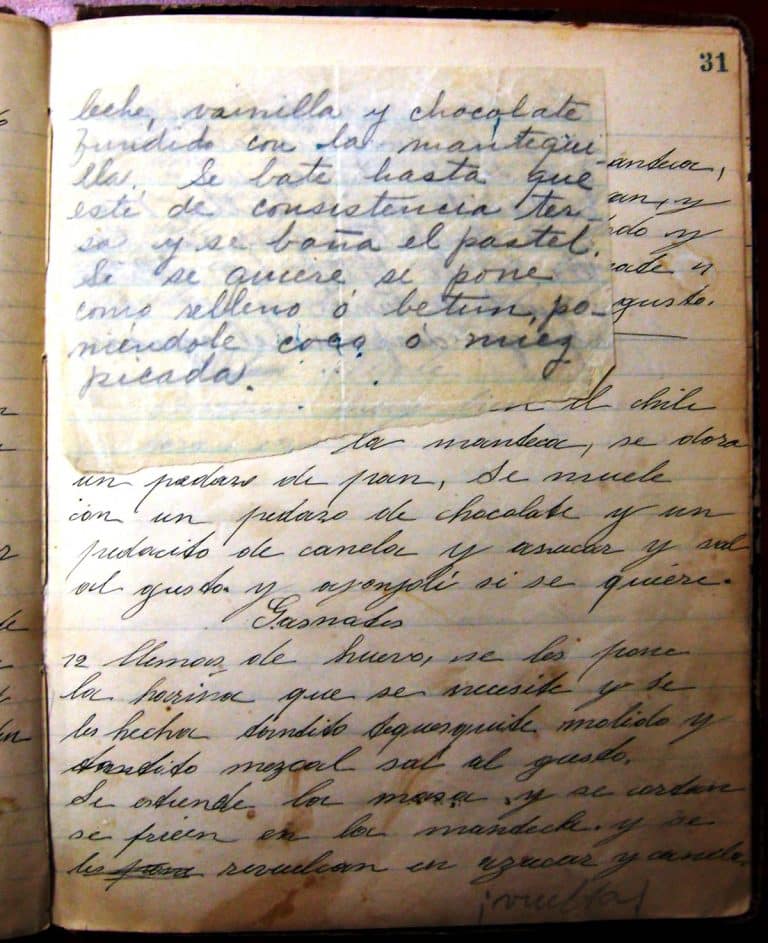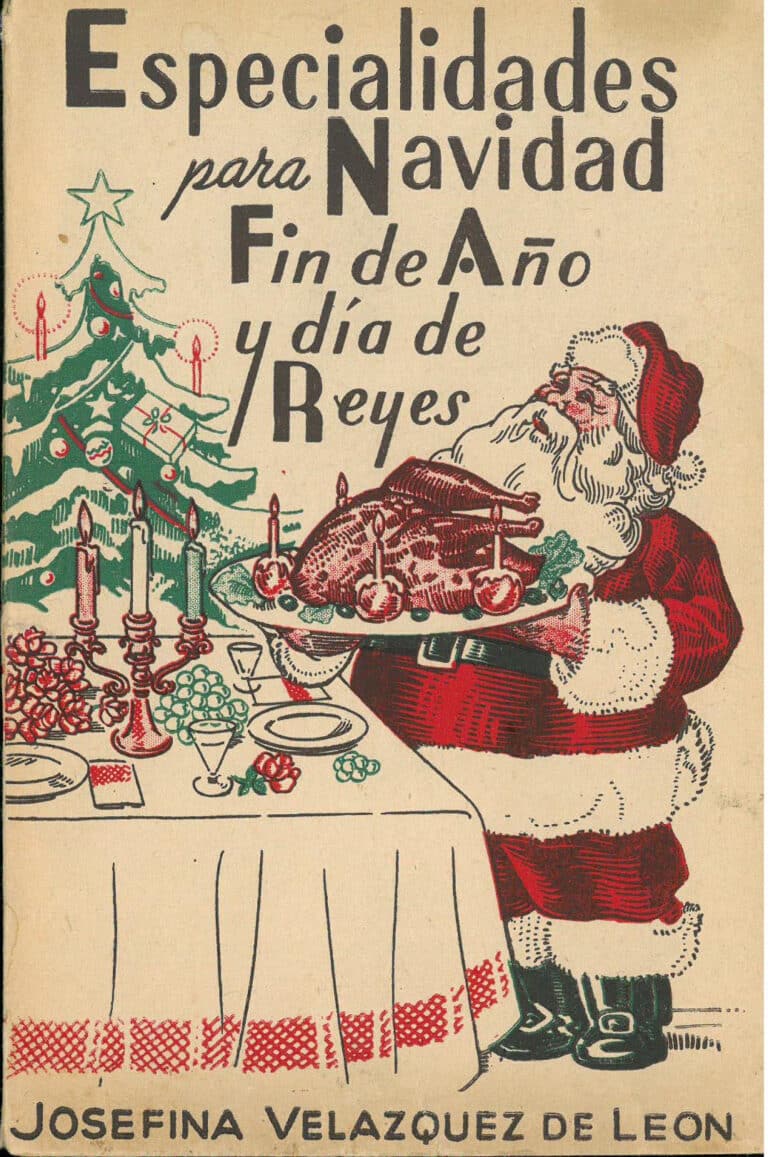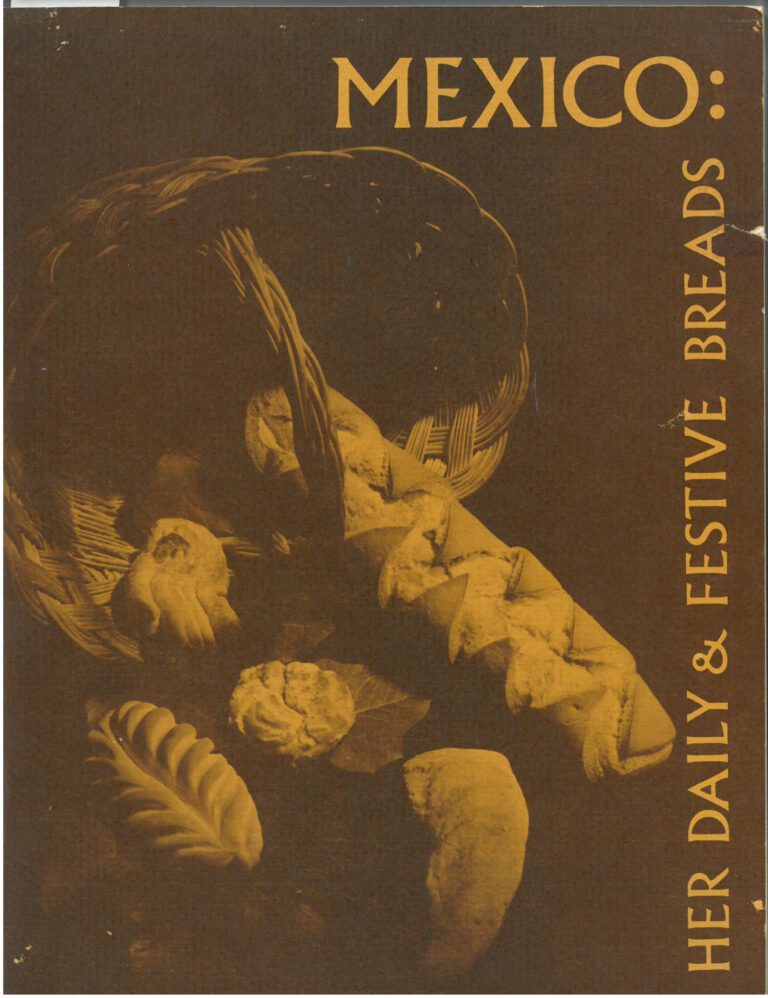Carlotas 1943 (Sweet Charlottes)
Unión Nacional de Productores de Azúcar (Mexico). Almanaque Dulce. México, D.F. : Azúcar, S.A. [TX819.S94 .A4435]
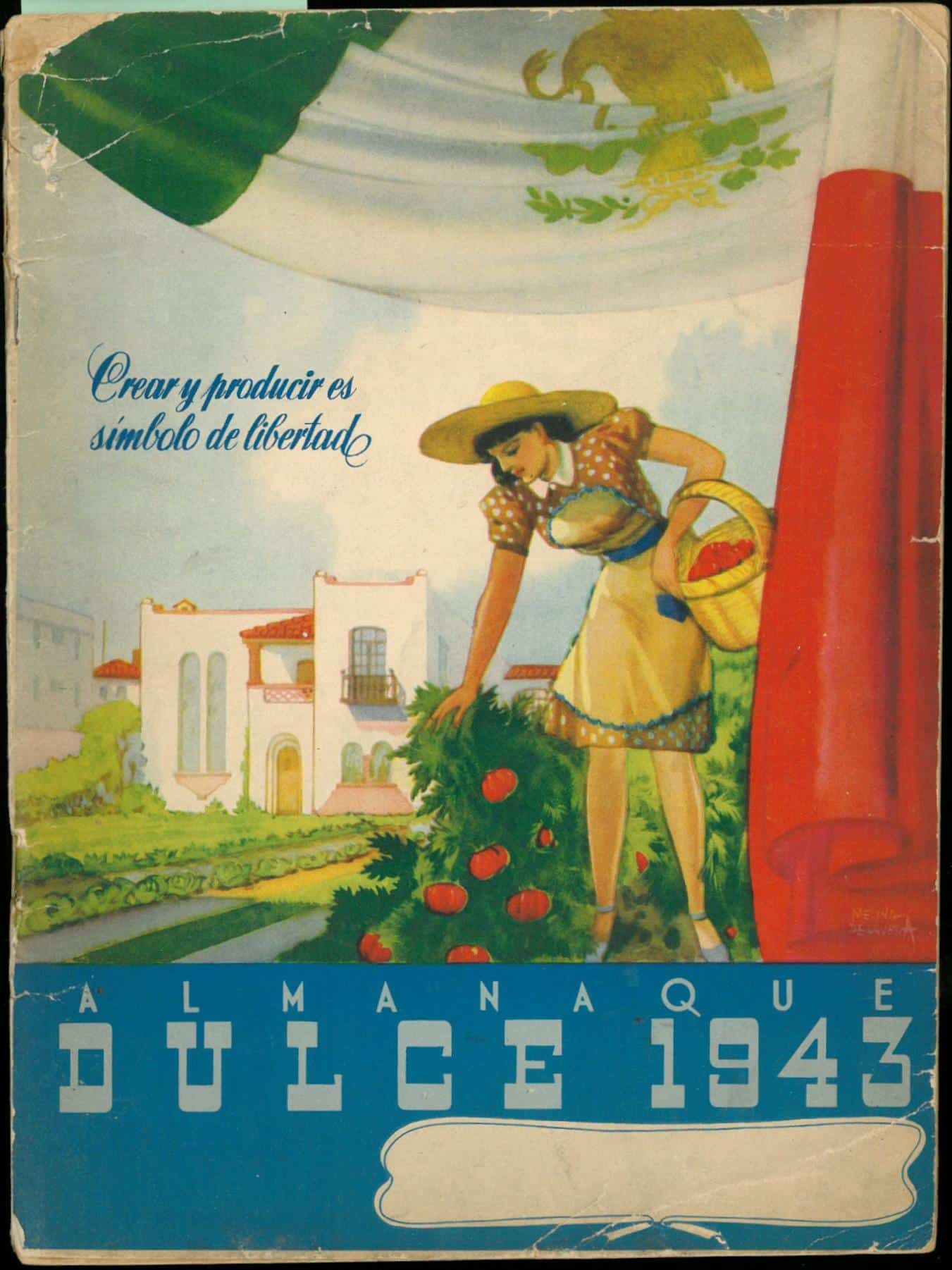
Carlotas or Charlottes encompass two slightly different desserts – the traditional British charlotte is “a hot pudding consisting of fruit, typically apple, baked within a case of bread, sponge cake, etc., in a characteristically deep round mold,” and the more elegant charlotte russe or Russian charlotte, “a cold pudding in which custard replaces the fruit.”[1]
Hot charlottes began appearing in English recipe books in the early 19th century and its name may (possibly, or possibly not) be in reference to Queen Charlotte (1744-1818), a patron of apple growers. The Russian charlotte is usually credited to early 19th century French chef Antonin Careme, who named it in honor of Czar Alexander of Russia.[2]
The 1941 Almanaque Dulce includes recipes for both types of charlottes, including versions using apples, strawberries, anise, chocolate, almonds, peaches, pecans, and lemons.
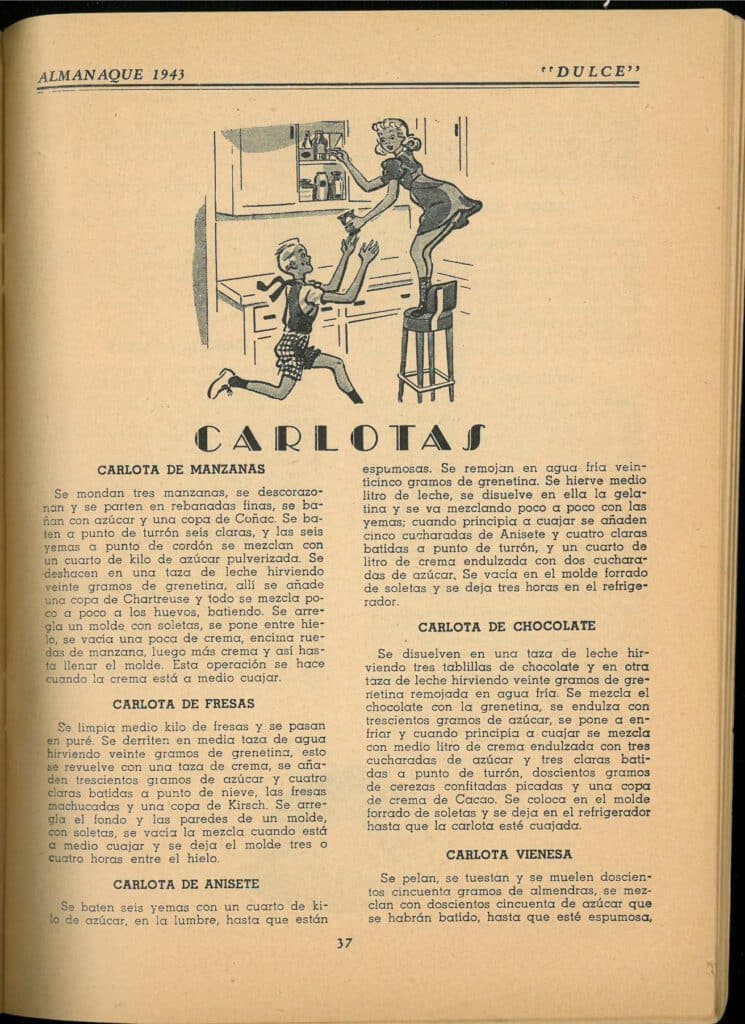
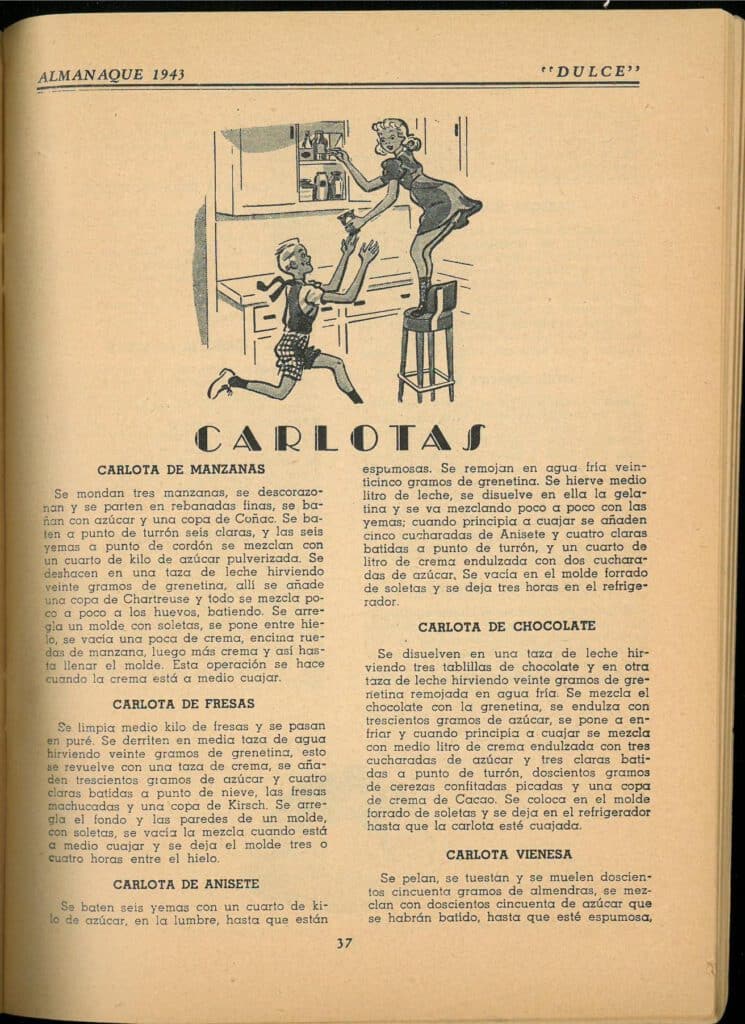
[1] “Charlotte.” An A-Z of Food and Drink. Ed. John Ayto. Oxford: Oxford University Press, 2002.
[2] ibid.

